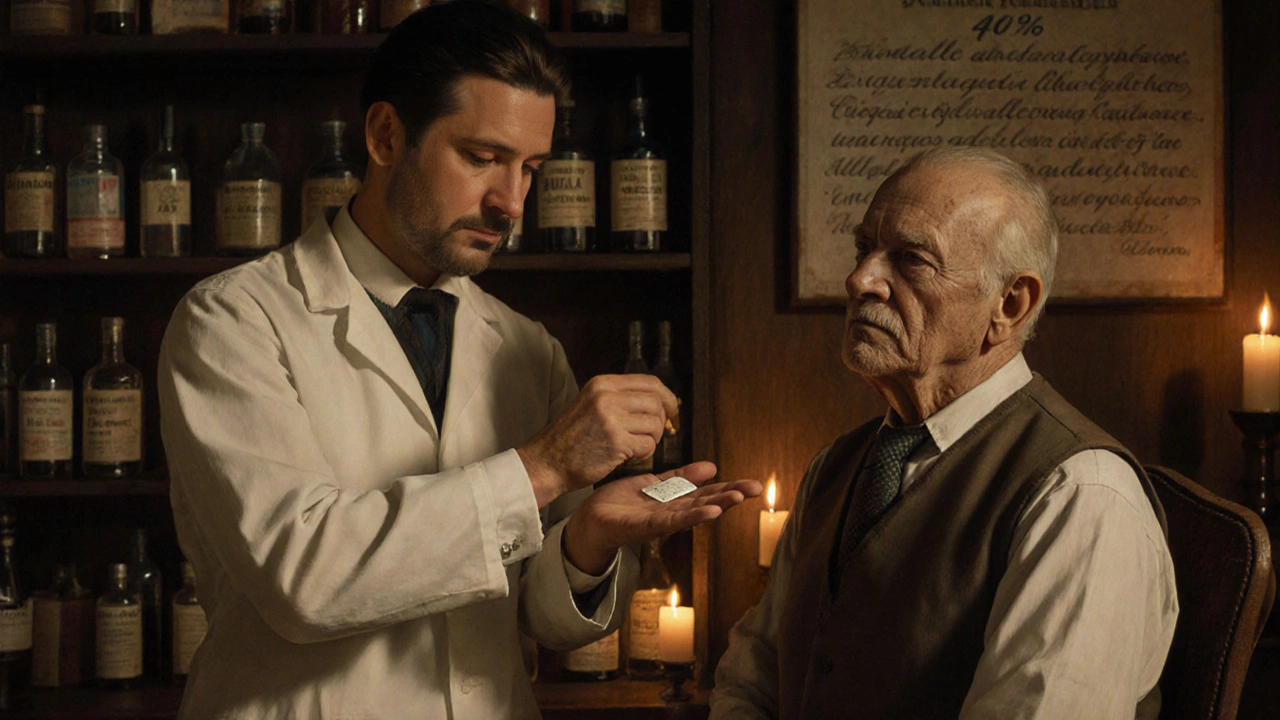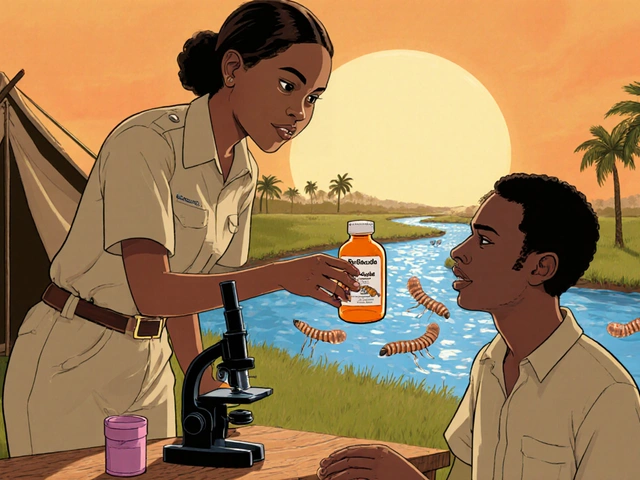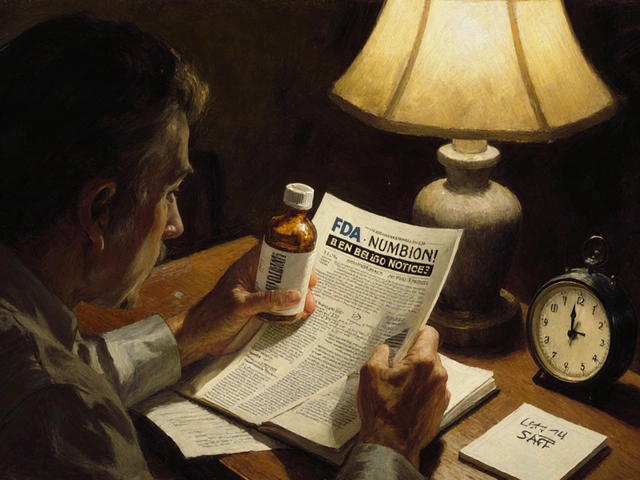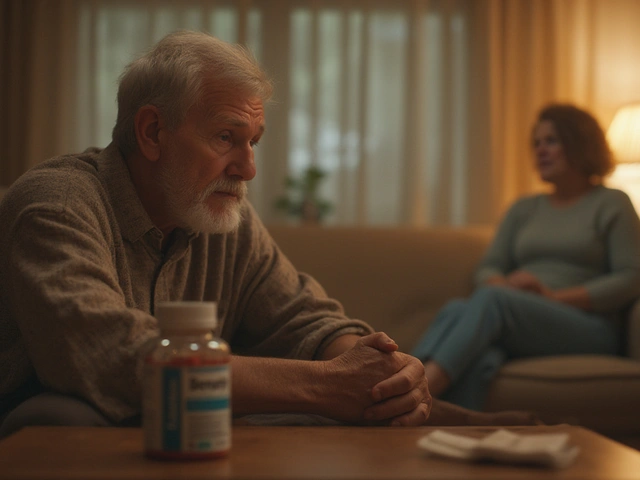Reformulation Impact Calculator
How Medication Reformulation Can Improve Your Treatment
This calculator estimates how different reformulation changes might impact your medication experience based on FDA-approved data. Note: Actual results may vary based on your specific condition and medical history.
Your Current Medication
Potential Reformulation Options
Have you ever picked up your prescription and noticed the pill looks different? Maybe it’s a different color, shape, or even a liquid instead of a tablet. You might wonder: is this the same medicine? The answer is usually yes-but the way it’s made has changed. This isn’t a mistake. It’s medication reformulation, and it’s happening more often than most patients realize.
What Exactly Is a Medication Reformulation?
Medication reformulation means changing how a drug is made-without changing the active ingredient. The medicine still treats the same condition, but the way it’s delivered, absorbed, or even packaged has been updated. This could mean switching from a pill you swallow to a patch you stick on your skin. Or turning a tablet that needs to be taken three times a day into one that works for 12 hours. Sometimes, they swap out inactive ingredients-like fillers or coatings-that used to cause stomach upset.
The key rule? The active pharmaceutical ingredient (API) stays the same. If the chemical structure of the drug changes, it’s no longer a reformulation-it’s a new drug. That’s why a chiral switch (changing the 3D shape of a molecule) counts as reformulation, but turning aspirin into a different compound doesn’t.
This isn’t new. Since the 1980s, the FDA has had a special approval path called 505(b)(2) to make this easier. Instead of starting from scratch with full clinical trials, companies can use existing safety data. That’s why reformulated drugs have a 30% approval rate-three times higher than brand-new drugs.
Why Do Companies Change Drug Formulas?
It’s not just about profit. While some critics call it “evergreening”-making tiny changes just to keep patents alive-many reformulations solve real problems patients face.
Take a common example: a blood pressure pill that used to require three doses a day. Patients forget. They skip doses. Their blood pressure spikes. Now, imagine the same medicine reformulated to release slowly over 24 hours. One pill. One time. That’s better adherence. Better outcomes. Less hospital visits.
Another reason: side effects. Some older drugs used excipients-like lactose or dyes-that triggered allergic reactions in a small group. Reformulating to remove those ingredients makes the drug safer for more people. A 2023 study from ZIM Labs showed that switching from an injectable form to an oral version improved patient compliance by 40% in chronic disease cases.
Orphan drugs-medicines for rare diseases-are especially ripe for reformulation. There are few patients, so companies can’t afford the cost of a full new drug trial. Reformulating an existing drug to make it easier to take, store, or deliver can turn a niche product into a viable treatment. One mid-sized pharma company in the U.S. completed a reformulation of an orphan drug in just 12 months, cutting development time by half and bringing it to patients faster.
How Are Reformulated Drugs Approved?
The FDA doesn’t treat reformulated drugs the same as brand-new ones. If the change is minor-like a new coating or a different release mechanism-the company only needs to prove the reformulated version is bioequivalent to the original. That means it gets into the bloodstream at the same rate and amount.
But if the change is bigger-say, switching from oral to inhalable delivery-the FDA may require new clinical data. That’s because the way the drug enters the body changes how it works. A drug meant for the gut might not work the same way when inhaled.
Companies still need to follow strict manufacturing rules. Every batch must be tested. Every ingredient tracked. Every step of production validated. This isn’t a shortcut-it’s a different path. The approval process still takes 3 to 5 years and costs $50-100 million. That’s a fraction of the $2.6 billion and 10-15 years needed to develop a completely new drug.

Reformulation vs. New Drug Development: The Numbers
Let’s compare the two paths side by side:
| Factor | Reformulation | New Drug Development |
|---|---|---|
| Success rate | 30% | ~10% |
| Development time | 3-5 years | 10-15 years |
| Cost | $50-100 million | $2.6 billion |
| Regulatory pathway | 505(b)(2) | 505(b)(1) |
| Patent protection | Shorter, but can be extended with novel delivery tech | Longer, up to 20 years |
Reformulation isn’t just cheaper-it’s smarter. It’s less risky. And it gets better medicines to patients faster. About 27% of all new drug applications to the FDA each year are reformulations. That’s nearly one in every four.
What Does This Mean for Patients?
For most people, reformulation is a quiet win. You get the same medicine, but it’s easier to take. Fewer side effects. Fewer pills. Less hassle.
But not always.
Sometimes, changes cause problems. A patient switching from one brand to a reformulated generic might notice the pill doesn’t work as well. That’s rare-but it happens. Why? Because even small changes in excipients can affect how the drug dissolves. A coating that’s too slow might delay absorption. A filler that’s too dense might make the tablet harder to break down.
That’s why pharmacists are trained to watch for these shifts. If you feel different after a switch-worse symptoms, new side effects, or if the medicine just doesn’t seem to work anymore-talk to your doctor. It’s not just “in your head.” It might be a formulation issue.
And yes, some reformulations are purely for profit. A company might change the shape of a pill just to make generics harder to copy. That’s legal-but it’s not always helpful. The best reformulations? Those that improve quality of life, not just balance sheets.
What’s Next for Reformulated Drugs?
The future is getting more advanced. New technologies are making reformulation even smarter. Think: pills that release medicine only when your body needs it. Or patches that monitor your blood levels and adjust dosage automatically. These aren’t sci-fi-they’re in development now.
The FDA’s 2022 guidance on new dosage forms is making it easier to bring these innovations to market. And with the rise of personalized medicine, reformulation will play a bigger role in tailoring drugs to individual needs. One size won’t fit all anymore.
Orphan drugs, pediatric formulations, and drugs for elderly patients are the biggest growth areas. Why? Because these populations need simpler, safer, more reliable dosing. Reformulation delivers that.
Global sales of reformulated drugs hit $60 billion in 2025. That’s 15% of the entire prescription drug market. And it’s growing.
What Should You Do If Your Medicine Changes?
Here’s what to do when your prescription looks different:
- Check the label. The active ingredient should be the same. If it’s not, it’s a different drug.
- Ask your pharmacist. They can tell you if it’s a reformulation or a generic swap.
- Monitor how you feel. Note any new side effects or changes in effectiveness.
- Don’t assume it’s the same. Even if the name is identical, the way it works might be slightly different.
- Speak up. If something feels off, contact your doctor. Don’t wait.
Reformulation isn’t a threat. It’s an evolution. The goal isn’t to trick patients. It’s to make medicines work better. And when done right, it saves lives.
Are reformulated drugs less effective than the original?
No, not if they’re approved by the FDA. Reformulated drugs must prove they’re bioequivalent-meaning they deliver the same amount of active ingredient into your bloodstream at the same rate. If a reformulation doesn’t meet this standard, it won’t be approved. Some patients may notice differences in how quickly they feel the effect, especially if the release mechanism changes, but the overall effectiveness should be the same.
Can reformulation cause new side effects?
Yes, sometimes. Even though the active ingredient stays the same, changing inactive ingredients (like fillers, dyes, or coatings) can trigger reactions in sensitive people. For example, switching from a lactose-based tablet to a starch-based one might cause issues for someone with a rare intolerance. Always report new symptoms to your doctor, even if you think it’s unrelated.
Why do I get a different-looking pill every time I refill?
There are two main reasons. First, your pharmacy might be filling your prescription with a different generic version-each manufacturer makes their own version of the same drug. Second, the original brand may have reformulated the drug, and your pharmacy switched to the new version. Neither is an error. Check the label for the manufacturer’s name and active ingredient to confirm it’s still the same medicine.
Is reformulation just a way for drug companies to make more money?
Sometimes. Companies do use reformulation to extend patent life and delay cheaper generics. But many reformulations solve real problems: making pills easier to swallow for elderly patients, reducing daily doses, or removing allergens. The FDA requires proof of benefit for major changes. Not every reformulation is meaningful-but many are.
How can I tell if my drug has been reformulated?
Look at the pill’s appearance-color, shape, markings. Check the manufacturer’s name on the bottle. If it’s different from last time, ask your pharmacist. They can tell you if it’s a reformulation, a generic switch, or just a different batch. You can also search the FDA’s Orange Book for changes to your drug’s approved formulations.
Final Thoughts
Medication reformulation is one of the most under-discussed but impactful shifts in modern medicine. It’s not flashy. It doesn’t make headlines. But it’s quietly making life easier for millions-reducing pill burden, cutting side effects, and improving adherence. The next time you see a different-looking pill, don’t panic. Ask questions. Stay informed. And remember: sometimes, the best medicine isn’t a new discovery-it’s an old one made better.





Joanne Beriña
This is why America's healthcare is a joke. Big Pharma changes the damn pill shape just to keep us hooked and pay more. I got a new version of my blood pressure med and it gave me migraines for two weeks. No one warned me. No one cares. Just profit.
They call it 'reformulation' like it's some noble science. It's a legal loophole. I'm done trusting these companies.
Why don't they just make ONE good version and stick with it? Why do we have to be lab rats for their patent extensions?
ABHISHEK NAHARIA
One must contemplate the epistemological underpinnings of pharmaceutical reformulation. Is the active ingredient truly the same if its bioavailability is altered by excipient manipulation? The Cartesian dualism of molecule versus delivery mechanism is a false dichotomy.
Capitalism has commodified therapeutic efficacy. The patient becomes a passive consumer of pharmacological aesthetics. We have forgotten that medicine was once about healing-not branding.
And yet, the 505(b)(2) pathway, while expedient, erodes the sanctity of clinical rigor. A 30% approval rate is not innovation-it is regulatory capture.
Hardik Malhan
Reformulation ≠ new molecular entity. Bioequivalence studies are the gatekeeper. If the AUC and Cmax are within 80-125% CI, it’s pharmacologically equivalent. The rest is marketing noise.
Excipient changes can affect dissolution kinetics but not necessarily clinical outcomes. Most patient reports of 'different effects' are placebo or confirmation bias.
Pharmacists should be trained to flag non-bioequivalent generics-not all reformulations are suspect. FDA’s Orange Book is public for a reason.
Casey Nicole
Ugh I swear every time I refill my antidepressant it’s a different color. Like I’m playing Russian roulette with my mental health. I swear one time it was neon green and I cried because I thought I got the wrong meds.
And don’t even get me started on the ‘new and improved’ versions that cost $20 more and taste like chalk. Who decided this was progress?
Big Pharma is just milking us for every dime while we’re too sick to fight back. I’m so tired.
Also why does every pill look like a piece of a LEGO set now? Can we go back to the 90s when meds didn’t look like they were made by a toddler with a paintbrush?
Kelsey Worth
sooo… like… the pill changed color again?? 🤡
imagine spending 20 years trusting your meds and then one day it’s a different shape and you’re like ‘wait is this the same thing or did i just get a placebo from the void’
also why do they make the pills so big?? my grandma can’t swallow them and no one cares
also i think i’m allergic to the new coating?? my throat felt weird
ps: i’m not a doctor but i play one on google
shelly roche
Hey everyone, I just want to say I’ve been on the same blood pressure med for 8 years and I’ve had 4 different versions. The first one gave me a rash. The second one made me dizzy. The third was fine. The fourth? Perfect.
It’s not magic. It’s science. And yeah, sometimes it takes a few tries to find the version that works for YOUR body.
Don’t panic when it changes. Talk to your pharmacist. They’re the real heroes here. And if you feel off? Speak up. You’re not being dramatic-you’re being smart.
Also, if you’re worried about generics? Ask for the brand name version. It’s your right. No shame in that.
We’re all just trying to stay healthy. Let’s support each other, not fear the pill.
Nirmal Jaysval
u think this is bad u should see how they change drugs in india. they just swap the active ingredient and call it same. no bioequivalence. no testing. just profit.
here in usa at least u have orange book. in india? u get a blue pill today and yellow tomorrow and they say ‘same thing’
u think reformulation is bad? wait till u see fake drugs sold as originals
also why are u so shocked? everything is corporate now. even your tears are monetized
Emily Rose
I’ve been a nurse for 15 years and I’ve seen patients cry because their pill changed. It’s not just about the medicine-it’s about trust.
But here’s the thing: most reformulations are GOOD. I’ve seen elderly patients switch from 4 pills a day to 1 and suddenly they’re eating dinner with their grandkids again.
Yes, sometimes it backfires. That’s why we document every change. That’s why we ask patients how they feel.
Don’t let fear silence your voice. But don’t let cynicism blind you to progress either.
Ask questions. Stay informed. And if you’re struggling? You’re not alone. We’re here.
Benedict Dy
The 505(b)(2) pathway is a regulatory fraud disguised as innovation. It allows companies to piggyback on existing safety data while charging premium prices for marginal changes.
There is no legitimate justification for a 24-hour extended-release version of a drug that was perfectly effective as a 12-hour tablet-except to extend patent life.
The FDA’s approval metrics are too lenient. Bioequivalence does not equal clinical equivalence. We are trading patient outcomes for corporate efficiency.
And the public? They’re too distracted by TikTok to notice they’re being systematically exploited.
Emily Nesbit
Reformulation is not inherently bad. But the lack of mandatory post-marketing surveillance for bioequivalent products is a critical flaw. If a patient reports reduced efficacy or new adverse events, there is no systematic mechanism to trigger a re-evaluation.
Current regulatory frameworks assume homogeneity of response across populations. This is scientifically indefensible.
Genetic polymorphisms in CYP450 enzymes, gut microbiome variations, and comorbidities can render a bioequivalent formulation clinically inadequate for specific subpopulations.
The FDA needs to mandate real-world evidence collection for all 505(b)(2) approvals. Not optional. Mandatory.
John Power
I used to be scared every time my pill changed. Then I started asking my pharmacist questions. Turns out, most of the time it’s just a different manufacturer making the same thing.
One time I got a new version and felt weird-so I called my doctor. Turns out the new coating was slowing absorption. We switched back.
It’s not about being paranoid. It’s about being proactive.
And hey, if you’re confused? You’re not dumb. The system is messy. But you’re not alone. Talk to someone. Your pharmacist, your doctor, even a friend who’s been through it. We’re all figuring this out together.
And if you’re reading this and feeling overwhelmed? Breathe. You’ve got this.
Richard Elias
so i got my new pill and it was a different shape and i thought i was going crazy
then i checked the label and it was the same active ingrediant
so i took it
and then i had a panic attack
not because of the med
but because i realized i have no control over my own body
big pharma decides what i swallow
and i just have to hope it works
fuck this
Scott McKenzie
Just wanted to say-my dad switched to a reformulated version of his diabetes med last year. Used to take 3 pills. Now it’s one. He hasn’t missed a dose since. No more stomach issues. No more confusion.
He’s 78. He’s hiking again. 😊
Yeah, some reformulations are shady. But not all. This one? It’s a miracle.
Ask your doc. Ask your pharmacist. Don’t assume the worst. Sometimes the ‘new’ is actually better.
And if you’re worried? You’re not crazy. Just be smart. 💪
Jeremy Mattocks
Let’s be real-reformulation is the unsung hero of modern pharmacology. Most people don’t realize how many lives have been improved by small, quiet changes: a chewable version for kids who gag on pills, a liquid form for the elderly with swallowing issues, a patch that eliminates daily dosing for people with dementia.
Yes, some companies abuse the 505(b)(2) pathway to delay generics. That’s a systemic problem, not a flaw in reformulation itself. We need better regulation, not blanket distrust.
And the numbers don’t lie: 27% of new drug applications are reformulations. That’s not corporate greed-that’s smart, targeted innovation. It’s cheaper, faster, and safer than developing new molecules from scratch.
Think about it: if every drug had to go through a 15-year, $2.6 billion trial just to change the release mechanism, we’d still be using 1970s formulations. No one would have access to anything.
Yes, occasionally a reformulation fails. But the alternative-stagnation-is far worse. The real tragedy isn’t reformulation. It’s the failure to invest in better monitoring systems so we can catch the bad ones before they hurt people.
So next time your pill changes, don’t panic. Ask questions. Check the label. Talk to your pharmacist. But don’t throw the baby out with the bathwater. Some of the most life-changing medical advances aren’t flashy. They’re just… better pills.